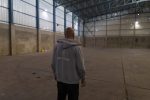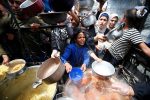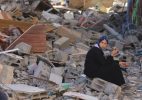The second-hand items markets became one of the main pillars of the Palestinian economy in the West Bank because of the popularity they enjoy due to their cheap prices compared to the new brand ones at a time of high prices and economic hardship.
Every single town or city in the West Bank has a significant number of shops that sell second-hand materials. These shops became popular with many visitors initiating a sector that employs thousands and generates hundreds of millions of dollars annually.
Mohammed Hoshiya a second-hand merchant told the PIC reporter that the second-hand market comprises goods of various uses but the most popular items sold there are electrical appliances furniture of all types and equipment with high quality.
Hoshiya noted that the source for these markets is the 1948 Occupied Palestinian Territories from which merchants buy items and bring them over to the West Bank to be sold. The city of Qalqilya to the north of the West Bank and the city of al-Khalil to the south are the largest two centers for the collection of these goods and are a basic source for many merchants. There are entire markets in Qalqiliya allocated for this purpose especially before the construction of the Apartheid Wall in 2003 which are still operating till our present day.
High quality goods
Speaking of why these goods are available in large quantities Hoshiya pointed out that the Israeli government grants tax incentives and large financial allocations to Israeli families to encourage them to buy new furniture frequently which push them to change their furniture continuously and sometimes every year despite using furniture for short periods of time thus huge amounts of of a high-quality furniture find their way to the Palestinian market through merchants.
He pointed out that a little maintenance or re-packaging makes it even difficult to distinguish old furniture from new brand one.
The types of items available at these markets also include building materials. Hassan Atatra for example bought a set of high-quality doors and aluminum windows to use them in his under-construction house. He bought a door for 150 NIS while the price of the new one exceeds 700 NIS. Painting it again makes it looks like new he says.
Atatra added to the PIC correspondent: “By doing so I got good quality items. Israel is a very large market for these goods. They are available and within our reach and I have saved a lot of money by buying these second-hand items.”
All kinds of goods
Nasser Sawaftah who works in the field of second-hand drilling materials such as diskettes electric saws etc. used to buy them from the Occupied Territories with very minor faults. Following some maintenance work he would sell them at a very high price.
He pointed out that he would buy a machine for 200 NIS sometimes while its real market price is not less than 2500 NIS and after a simple maintenance he would sell it at 1500 NIS at least.
This second-hand market covers everything. Mohammed Herish from Qaffin in Tulkarm who works in the construction of greenhouses told the PIC correspondent that the demand for second-hand greenhouses is higher than imported new ones because the quality of iron in the second-hand greenhouses is better than that of the new ones in addition to saving about 35% of the cost.
By tracking all types of goods in the second-hand market one could not find items that do not have a strong supply line for customers. Sometimes one could find furniture such as tables chairs etc. with exquisite designs and high quality woods that could not be found in the new ones and only with one third of the real price according to citizen Karim Khamisa.
Although the second-hand market is an informal one it employs thousands of citizens. Traders estimate an annual trade of hundreds of millions of dollars although there are no official studies on this subject in addition to being an outlet for middle and low-income families.















